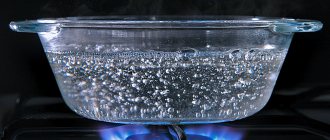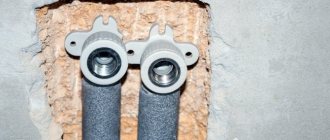Fire hazard of flammable liquids
Flammable liquids include substances with a low flash point (oil, acetone, kerosene, gasoline, etc.), which ignite in a matter of seconds. The danger of flammable liquids lies in their ability to maintain the combustion process after removing the ignition source. At any time of the year and at any air temperature, the slightest spark caught in such a substance can cause ignition.
Petrol
Refers to flammable liquids.
There are different types of gasoline brands:
The conditions and purpose of their use vary.
| Gasoline brands | Flash point, ℃ | Self-ignition temperature, ℃ | Ignition area by volume, % | Ignition temperature limits, ℃ |
| Aviation | from –34 to –38 | 380–475 | 0,99–5,48 | from –38 to +5 |
| Automotive | from –27 to –39 | 255–370 | 0,76–5,16 | from –39 to –8 |
Kerosene
This flammable substance can cause an explosion when heated above 37 degrees. The fire spreads rapidly if extinguishing is not started in time. Eliminate the source of fire with powder fire extinguishers. The substance irritates the nasopharynx and skin, so when extinguishing fires, rescuers must wear protective gloves and masks.
Tank fire control plan
It is advisable to begin extinguishing flammable liquids and gases in tanks with an assessment of the current situation, as well as with the calculation of the required means and forces. In the event of such an emergency, a voluntary fire brigade should be organized, the head of which will be the person responsible for managing the process of extinguishing the flame and distributing tasks among the fire extinguishing participants.
The responsible person must determine the volume of the territory in which extinguishing work will be carried out, and organize the removal of unauthorized persons from the danger zone.
Upon arrival at the fire site, the leader conducts reconnaissance and indicates to other firefighting participants the areas where maximum forces should be deployed.
Throughout the entire work, the manager’s tasks include providing all available forces and means of cooling flammable liquids and gases in tanks, as well as choosing the optimal method of fighting fire.
When the main forces are thrown into working with a burning container, it is important to protect neighboring tanks in case the damaged one collapses or the resulting gas-air mixture explodes. It is for this purpose that all fire engines are installed at a safe distance, and hose lines are laid to the work site.
Extinguishing tank farms of flammable liquids and gases directly depends on the duration of the fire, the nature of the resulting destruction of the tanks, the volume of stored liquids in the damaged and neighboring tanks, the likelihood of an explosion and subsequent emergency spill of the contents.
Causes of ignition of gasoline and other flammable liquids
The flammable substance can be:
Attention! The most dangerous, from a fire safety point of view, are gases.
Flammable liquids can ignite due to the following common reasons:
- electrical sparks entering tanks with flammable liquids;
- spontaneous combustion (as an option - peat);
- use of incendiary mixtures (pyrogels, white phosphorus, etc.);
- smoking in areas where petroleum products, gasoline and other flammable liquids are stored;
- warming up car engines using a kerosene lamp or open fire: very often drivers simply forget to put out the kerosene lamp and leave it in the garage;
- failure to comply with the rules for storing and transporting flammable substances;
- washing oily, oil- or gasoline-stained clothing indoors;
- violation of fire safety rules for premises where flammable liquids are stored;
- human factor (unwiped puddle of gasoline on the floor, a canister of kerosene left open, etc.).
Rules for using fire extinguishers
Having become familiar with a large number of different models, it is important to understand how to use fire extinguishers correctly.
How to properly use and implement powder models? Next, we will consider the activation of the following models: OP-1, OP-2, OP-3, OP-5, OP-10.
- It is necessary to pull out the sealed pin with a sharp movement;
- Move approximately 4 meters away from the fire;
- The pump fire extinguisher can be activated by pressing the handle;
- Operate the model with a built-in pressure source. To do this, move the start handle up and press the handle of the spray gun;
- You can repeat the previous action several times;
- The optimal direction angle of the OTV jet is 30 degrees;
How to use carbon dioxide fire extinguishers correctly?
These options differ in that the OTV inside remains under the pressure of its own steam or gas all the time. These models are versatile and can be used on all possible fires. It is best to use them to extinguish fires at electrical substations.
When working with carbon dioxide, it is prohibited to handle the socket without personal protective equipment. In some cases, the strong cooling effect leads to a decrease in the temperature of the bell to minus 70 degrees. The consequences of careless use are thermal burns.
Carbon dioxide fire extinguishers can be manual or mobile.
How to use manual ones?
- We remove the device from the place where it is installed;
- We break the seal;
- We position the bell strictly horizontally;
- Click on the lever;
- We direct the exiting stream towards the fire.
How to use mobile phones?
- Unwind the rubber hose;
- Choosing a place to extinguish the fire;
- We break the seal;
- Turn the lever toward you until it stops;
- We direct the bell to the hearth.
Why can't you extinguish with water?
What means cannot extinguish fuels and lubricants? The most important rule when extinguishing is that gasoline cannot be extinguished with water. This will only increase the fire area.
Fire is the combination of a burning substance with O2. When extinguishing a fire, it is necessary to eliminate the possibility of air flow to the source of fire. H2O acts as a barrier to oxygen. Water reduces the temperature of a burning object and envelops it.
However, with gasoline things are different. When GH and H2O are mixed, oxygen displacement does not occur. Gasoline is lighter than water. It just rises to the surface and continues to burn. In addition, the fire becomes larger due to the fact that gasoline spreads along with H2O.
The process of fire development in a tank
Extinguishing fires in tank farms storing flammable liquids and gases depends on the complexity of the fire development process. Combustion begins due to the explosion of the gas-air mixture in the presence of an ignition source. The formation of a gassed environment occurs due to the properties of gas liquids and flammable liquids, as well as operating modes and climatic conditions around the tank. Exploding, the gas-air mixture rushes upward at high speed, often tearing off the roof of the container, after which ignition begins over the entire surface of the stored flammable liquid.
Methods for extinguishing gasoline
So how can you extinguish burning gasoline, kerosene, oils and other flammable and combustible liquids?
At the first stage of fire extinguishing, the following portable, mobile and manual means are used:
Fire extinguishers
The markings on the devices will tell you whether they can be used to put out gasoline.
Ignition of gas fluid is a class B fire.
The means used to extinguish fires of this class are:
- Powder fire extinguishers. Used in transport (cars, planes, buses, etc.). The principle of operation is to block the flow of O2.
- Carbon dioxide fire extinguishers. They are used in everyday life as they do not harm electrical equipment. They are able to limit the supply of oxygen and reduce the temperature at the source of the fire.
- Foam fire extinguishers. They work by displacing foam from the foam concentrate onto the burning substance. It cools the fire and removes oxygen.
Attention! Powder fire extinguishers are not used in domestic conditions, since after their use some of the active substance remains. They spoil the decoration of the room, and cleaning them takes a lot of time and effort.
Sand
You can extinguish gasoline and other liquids using ordinary sand or dry earth.
- stop the increase in burning space;
- extinguish the flame.
How can you put out a kerosene fire?
Kerosene is a flammable liquid. It is worth noting that water does not extinguish kerosene! In addition, this substance is lighter than water - and if burning kerosene is poured with water, it will float to its surface without stopping the combustion. In this case, there is a danger of it spreading in different directions, which can provoke an increase in the fire area.
Why can't you put out a kerosene fire with water? Because the main goal that needs to be achieved when extinguishing a fire is to block the access of oxygen to the open flame. And this cannot be achieved through water.
You can extinguish spilled burning kerosene using the following available means:
- sand;
- lumps of earth;
- thick cloth (you can moisten it with water);
- fire extinguishers (preferred).
In order to effectively extinguish a fire, you need to knock down the flames by pouring the above substances on top, using a steel pan, plywood sheet, shovel, metal scoop, etc. In this case, flammable vapors cease to be released when the entire surface of the burning kerosene is completely covered with a sufficient layer of sand or earth.
If a fire occurs due to the ignition of spilled kerosene, you should immediately call a fire brigade, even if you dealt with it on your own. The fire may go unnoticed in the voids under the floors and flare up with greater force after some time.
There are also reasons why you cannot extinguish kerosene with water - the flame can spread to surrounding objects, especially if the fire occurs in a garage or apartment. A smoldering object located in a place inaccessible for inspection may cause the fire to restart.
Algorithm of actions when burning gasoline
If you witness the ignition of fuel, including gasoline, follow the instructions:
- Immediately notify the fire department about the fire or ask people nearby to do so.
- If a car is on fire, use the built-in fire extinguisher, directing the active substance from the edge to the middle of the fire.
- If there is a fire under the hood of the car, carefully open the lid using a stick or iron objects at a distance of 1-2 meters. Cover the fire with a cloth, use a fire extinguisher, or try to cover the flame with sand.
- If you are unable to extinguish the fire, move 10 meters away from the fire and wait for rescuers to arrive, and also follow what the fire service recommends.
- In cases where there are cars or construction objects nearby, warn others about the danger.
- Oil facilities and large enterprises must have an automatic fire safety system. If it does not work, staff must turn it on manually.
| Emergency services | Landline number | Cell number |
| Fire Department | 01 | 101 |
| Police | 02 | 102 |
| Ambulance | 03 | 103 |
| Single help service | 112 | 112 |
Types of fires and their use
When it comes to laying out and lighting a fire, the first question that arises is what purpose you need it for. This affects the choice of wood stacking technique and the choice of fuel.
| Smoke | Fiery | Zharova | |
| Purpose | 1. Getting rid of insects (midges, mosquitoes, etc.). 2. Sending a distress signal. Aimed at creating a large amount of smoke | 1. Lighting. 2. Scaring away wild animals. 3. Heating water and food. Aimed at creating a large flame | 1. Drying things. 2. Heating. 3. Cooking. Aimed at creating heat through coals and high temperature |
| How to make a fire | This type of fire is created by throwing into the fire:
Or smoke is formed when the fire produces little heat:
Therefore, the answer to the question that interests many: “how to make a fire without smoke” sounds simple - “do not do everything that is indicated in this paragraph.” | Special laying of firewood is required:
| Special laying of firewood is required:
|
"Well"
This type of fire is a quadrangular structure consisting of short, thick logs. Brushwood, small firewood, dry grass and other kindling are placed inside it. Slow-burning, such a fire leaves a lot of coals, which give a high temperature.
"Night" or "taiga"
You will need several long logs. They are laid strictly parallel or at a slight angle. There are several ways to stack logs. All types of fires in this group are distinguished by the fact that they use the principle of interaction between burning surfaces, between which there are narrow gaps. Thanks to them, a powerful vertical thrust arises, which prevents the heat from fading away. This group of fires does not require frequent replenishment of fuel - this is their advantage.
Fire in the pit
It is bred in a pit, the walls of which are covered with large logs. A fire is lit at the bottom using small branches.
This fire is windproof, camouflaged, and emits extremely high levels of heat, leaving behind embers that remain warm for a long time. It is a very safe type of fire, as it is difficult to transfer to surrounding bushes or trees.
Are there any downsides to a campfire? Yes, several small ones: the pit is not suitable for heating several people, because it almost does not radiate heat from the sides.
"Star"
Fire with low wood consumption and long burning time. For this technique, you create a heart of fire from small branches, bark, dry grass, and other flammable materials. Then take about 5-7 thick long logs. You fold their ends in such a way that the appearance of the structure resembles a star. As wood burns, it moves closer to
The firewood is stacked on top of each other to form a cone. Place the kindling in the center (core). The disadvantage of this fire is that its upper part burns quite quickly. But the flame is concentrated and powerful.
The soil on which the fire is located must first be cleared of leaves and branches so that the fire does not spread uncontrollably. At best, you place a ring of stones or a low earthen wall around the fire.
Precautions when extinguishing
When extinguishing LV on your own, follow the rules to avoid injury and damage:
- do not start putting out a fire if you are wearing oily clothes or your hands are dirty with gasoline or other flammable liquid;
- When extinguishing a fire, make sure that there are no people within 10 meters of the fire;
- It is not recommended to extinguish the LV using water, this can lead to an explosion;
- It is advisable to extinguish LV fires in special clothing: hands should be protected with gloves, there should be no bare areas on the body.
Providing first aid to the victim
The steps are simple. While the ambulance is on the way, it is worth providing first aid. To do this, you need to give the victim painkillers. Drinking plenty of fluids is beneficial. Drinking alcohol is prohibited.
It is worth conducting a visual test of the victim's condition.
Redness and blistering indicate 1st or 2nd degree burns. In this case, it is necessary to apply a sterile bandage to the damaged areas of the skin. It is strictly forbidden to use pork fat, petroleum jelly or vegetable oil.
If charring and necrosis of the skin are observed, we are talking about severe 3rd and 4th degree burns. Before doctors arrive, you need to wrap the victim in a clean sheet, cover him with a blanket, and provide access to plenty of fluids. If the victim is in a state of shock, it is worth giving a sedative. Before the doctors arrive, you must ensure complete rest.
Rules for storing gasoline
Flammable and combustible substances are stored taking into account all safety rules for premises with flammable liquids:
- pouring flammable substances from one container to another must be done under strict control over the filling of the container;
- all storage containers must be technically tested and certified;
- containers with gasoline are prohibited from being placed near open flame sources and heating devices;
- Do not heat containers with a kerosene lamp or gas burner.
The speed and correctness of initial actions is the key to effective fire suppression in the future. Knowing how to use fire extinguishing agents as intended can save your life.
Source
What are fire extinguishing powders
This is a universal fire extinguisher. A finely dispersed fraction of solid matter is used as a fire extinguishing agent (FEA), sprayed into the fire.
Powder in a fire extinguisher
Composition and purpose
The powder is made from various mineral salts by crushing them. Dry crushed substances are added to the resulting dust to reduce clumping of the mixture.
The main component of the powder is 95% non-flammable base, for which metal chlorides, sulfates, silica gels, etc. are used.
The fire extinguishing properties of the powder are indicated on the body of the device through which the composition is supplied to the source of the flame and in the manufacturer’s instructions attached to it.
Advantages and disadvantages
The spread of powder fire extinguishing agents is due to a set of valuable qualities:
- increased shelf life and use before recharging;
- Possibility of use in any climatic conditions, do not freeze in the cold;
- allow extinguishing all classes of fires.
Despite significant advantages, fire extinguishing dry substances also have a number of disadvantages:
- They make evacuation difficult because when using powder devices:
- It is not allowed to turn on smoke removal systems;
- irritation of the mucous membranes and respiratory tract occurs in humans;
- Visibility in small rooms deteriorates.
- They are not recommended for extinguishing fine-tuning electronic equipment, since substance particles that fall on the boards can cause a short circuit in the circuit.
- There is no cooling function for the source of fire; the process of smoldering of solid substances is not stopped, which can lead to the re-emergence of the flame.
OP diagram
Powder classification
Dry fire extinguishing agents are divided according to their ability to extinguish fires into:
- General purpose or universal, these include:
- powders capable of extinguishing fire of ABC classes;
- as in the first paragraph, except for equipment connected to a working electrical network (ABC);
- mixtures for suppressing flames in electrical installations under voltage, in liquids and gases (ALL);
- the same as in the previous paragraph, excluding electrical equipment (E);
- Specialized or targeted, used to extinguish fires of alkali metals and their compounds (D).
Fire extinguishing ability
This is the name given to the composition consumption in kilograms per square meter of burning area.
This characteristic is assessed by supplying a substance to a model focus. The fire extinguishing ability is determined by the amount of composition used, at which re-ignition did not occur.
The process of extinguishing a flame with a powder fire extinguisher OP-2
Fluidity
Characteristics of powder costs. It is measured in kilograms per second. In this case, the remainder of the unused composition during experimental extinguishing should not exceed ten percent.
The parameter measurements are made on test equipment, where the same conditions are created as in the real device.
Density
Measured in kg/m3. In a standard situation it should not be less than seven hundred kg/m3. When tested on a vibration stand - 1000 kg/m3 or more.
How to extinguish flammable liquids
The ignition of flammable liquids is classified as class B fires. Such liquids include those that can ignite at temperatures up to 60 degrees.
Most often these are gasoline, kerosene, fuels and lubricants, and various types of acids. As a rule, it is not the liquids themselves that burn, but their vapors. The stronger the fire, the more fumes, which are toxic to humans. That is why gasoline and kerosene are stored in closed containers, and when used, care is taken to ensure that as little as possible of the substance gets into the air.
In the event of a fire at a gas station, tanker or warehouse, you must act immediately - substances burn very quickly. For example, in an hour approximately 15 cm of kerosene and 25 cm of gasoline will burn out. The main danger in this case is the formation of toxic combustion products. For example, acrolein, which is released by petroleum products, will cause irreparable harm to human health within 5-10 minutes.
How tanks are cooled during firefighting
Extinguishing fires of flammable liquids and gases in tanks must necessarily be accompanied by cooling the contents of the damaged container. The latter needs to be cooled along the entire length of its circumference. In relation to adjacent tanks, there is also a requirement for mandatory cooling, but only along the entire length of the semicircle of the tank on the side facing the combustion zone. In some cases, it is possible not to carry out the cooling procedure for adjacent containers if there is no threat of flame spread. The water supply for cooling purposes must be at a rate of at least 1.2 l/s.
To extinguish tanks with gas and flammable liquids with a volume of 5 thousand cubic meters, it is recommended to use fire monitors, which not only provide the required water release power, but also have a mode of irrigation of the burning object.
The order of work with adjacent undamaged containers is such that those located downwind of the fire are protected and cooled first.
The duration of operation is determined until the flame is completely eliminated and the temperature level inside the container is normalized.
How to properly extinguish flammable liquids
There is a special algorithm for extinguishing flammable liquids. First, block the leak using a barrier, for example, a layer of foam or powder - this must be done, otherwise the fire will spread and the container may explode. In addition, the constant supply of flammable substances will complicate the operation of the automatic fire control system. At production facilities and tankers, they additionally use ventilation - they simply turn it off so that as little oxygen as possible reaches the source of the fire.
The container itself must be cooled, otherwise the vapors inside it will ignite. The temperature of the container should not exceed the maximum values for the substance - be no higher than 60 degrees. To do this, use AUPT with finely sprayed water or deluge water installations with small holes. It is important that water does not fall on the combustion site itself.
Simultaneously with these measures, a special powder is applied to the flammable liquid. BONTEL powder fire extinguishing agent not only blocks the access of oxygen, but also creates a protective film on the surface. The substance breaks down into harmless components and can be easily removed using conventional means.
If the characteristics of the facility allow the presence of personnel during an emergency, foam fire extinguishers can be used. Make sure that the fire extinguisher in the fire extinguisher is in working order, and that employees know how to handle primary fire extinguishing equipment. In facilities containing flammable liquids, we recommend placing fire extinguishers that are appropriate for the physical characteristics of the permanent employees. For example, you shouldn't place huge, heavy cylinders if most of your employees are elderly and won't be able to lift them.
Design and principle of operation of a carbon dioxide fire extinguisher
The structure of a fire extinguisher is quite simple: a cylinder, a siphon pipe, a socket, and a shut-off device. Carbon dioxide is located at the beginning in the cylinder; if necessary, it moves through a siphon pipe, also located inside the body. Acid moves along it to the bell. There is a locking device in its path. It is activated and opens only when the pin is pulled out and the lever is pressed. Only in this case will carbon dioxide be released from the socket, which serves as both a sprayer and a means of flow control.
- Kia sportage 2.0d at 4wd premium (04.2014 - 02.2016) - technical specifications
Carbon dioxide fire extinguisher
Important! The check is necessary for complete reliability and safety, since during transportation and storage the lever may be accidentally pressed, which will lead to the release of acid. The operating principle of this device is based on the displacement of carbon dioxide from the cylinder under the influence of its own internal pressure
Moving through the siphon tube, the gas expands and turns into liquid carbon dioxide. This process is accompanied not only by significant expansion (up to 500 times), but also by a sharp decrease in temperature to about -70 degrees. Thanks to this, not only oxygen is blocked (by replacing it with carbon dioxide), but also the burning body is cooled
The principle of operation of this device is based on the displacement of carbon dioxide from the cylinder under the influence of its own internal pressure. Moving through the siphon tube, the gas expands and turns into liquid carbon dioxide. This process is accompanied not only by significant expansion (up to 500 times), but also by a sharp decrease in temperature to about -70 degrees. Thanks to this, not only oxygen is blocked (by replacing it with carbon dioxide), but also the burning body is cooled.
The volume of a manual OU fire extinguisher ranges from 1.5 to 9 liters, depending on the marking. The rate of gas release depends on the volume - it takes from 8 to 30 seconds until the cylinder is completely consumed. Another characteristic is the length of the jet (it ranges from 2 to 4 meters). This allows you to be at a comfortable distance from the fire in relative safety.
Fire extinguisher device
How to extinguish gasoline
Gasoline can be either automobile or aviation. An automobile outbreak occurs at a minimum temperature of 27 °C, an aviation outbreak - 34 °C. The premises where gasoline is stored belongs to fire hazard class A (very dangerous).
When designing AUPT for such objects, they are guided by the Code of Rules:
You can extinguish gasoline with fire extinguishers - foam, powder, or using automatic systems, including gas and foam. It is allowed to use sand, soil, and non-flammable fabric (felt) from available materials.
Checking and filling standards
Regulatory documents, which include two current GOSTs: R 51057 and R 51017, determine the need for constant checking and recharging of fire extinguishers. If the model has been used, the charge must be completely replaced. The fire extinguisher needs to be refilled only when it loses the required pressure.
Full list of check and refueling periods depending on the type of fire extinguishing agent:
- For models filled with water and water with various additives, as well as foam, checking and recharging should be carried out at least once a year.
- For devices that use powder filler, an annual inspection is provided, and refilling is carried out at least once every five years;
- All fire extinguishers with carbon dioxide and freon are weighed once a year to check the pressure and refilled with fire extinguisher once every five years.
In addition to the recommendations presented, there are other rules related to the operation, testing and refilling of fire extinguishers:
- In cases where the fire extinguisher charge, consisting of several components, contains a hydrocarbon type of foaming agent, fire extinguishers must be recharged at least once every 2 years;
- Devices that are made from stainless steel and coated with polymers inside must be checked taking into account the recommendations of the manufacturer. This rule also applies to models in which the OVD contains fluorine. At the same time, at least once every 5 years, these models must be fully checked and recharged.
In order for a specialized company to be able to inspect, inspect and recharge fire extinguishers, it must meet certain mandatory requirements:
- The company has its own production and warehouse base with a sufficient number of premises that are equipped with supply and exhaust ventilation;
- The company has all the necessary equipment with which routine tests are carried out;
- The company has the required tools with which to disassemble and repair incoming fire extinguishers;
- A specialized company uses containers in which various types of explosive charges are collected;
- Availability of equipment used to recharge or dispose of fire extinguishing agents;
- Availability of own chambers for painting and drying all elements of the fire extinguisher body;
- The company must have equipment to carry out various tests related to hydraulics and pneumatics;
- Availability of staff;
- Availability of a special license that allows you to carry out work.
How to put out oil
Most often, oil burns in everyday life, for example, in a frying pan. Many people try to extinguish it with water - burning drops splash and a big fire starts. For domestic use, we recommend using compact fire extinguishers or sprays. BONTEL substances, which are filled into portable protective equipment, do not emit harmful components, they are easy to remove after the oil goes out.
For industrial facilities, in addition to available means, it is necessary to develop and implement automatic fire extinguishing systems. When choosing an OTV, you can focus on the same requirements that apply to gasoline and kerosene.
When is the water suitable for extinguishing?
At enterprises and other industrial facilities, this issue is resolved at the stage of development of technological processes. When designing fire protection systems, the specifics of production are taken into account and the list of raw materials used is studied. In accordance with the research carried out, acceptable primary fire extinguishing means and automatic installations are determined.
The most in demand are systems with water supply and hydrants in warehouses, woodworking enterprises, educational, social and medical institutions where class A fires predominate.
Firefighting at a timber warehouse
At home, few people prepare in advance for unusual situations. In apartments and modern country houses, water is always available, which can be used to extinguish fires. Dachas must be equipped with a specialized water barrel.
In multi-apartment buildings, fires are most often classified as type A. Because mostly solid objects, both prone to smoldering and not, ignite.
If there is no water supply system, there should be containers filled with water near wooden buildings, sawmills, and woodworking warehouses that can be used to extinguish the fire. Under normal conditions, they can stand without use for the entire fire period. There is often a temptation to spend their contents on watering, hygiene devices, washing dishes, tools, and laundry.
But this is strictly prohibited. To the question whether it is possible to use the water supply for fire extinguishing for household purposes, there is one answer - a categorical no.
Correct actions in case of fire
First of all, it is necessary to take all measures to turn off the power to burning electrical appliances. You can do this in several ways:
- Unplug the device from the socket. This is only permitted if the flame does not damage the insulation on the plug, socket, or nearby sections of the wire.
- Turn off the circuit breaker that feeds the line (or the switch that supplies electricity to the room where the fire occurred).
- Use an ax to cut the cable or wire that supplies electricity to the burning appliance.
If for some reason it is impossible to de-energize the line on which the fire occurred, they begin to extinguish the fire with means that do not conduct current. If necessary, evacuation and notification of the fire service are also carried out.
We recommend: What house plants bring happiness and well-being?
Everyone should have this. How and with what to extinguish household fires. Fire-resistant fabric. PP 600. Fire blanket.











